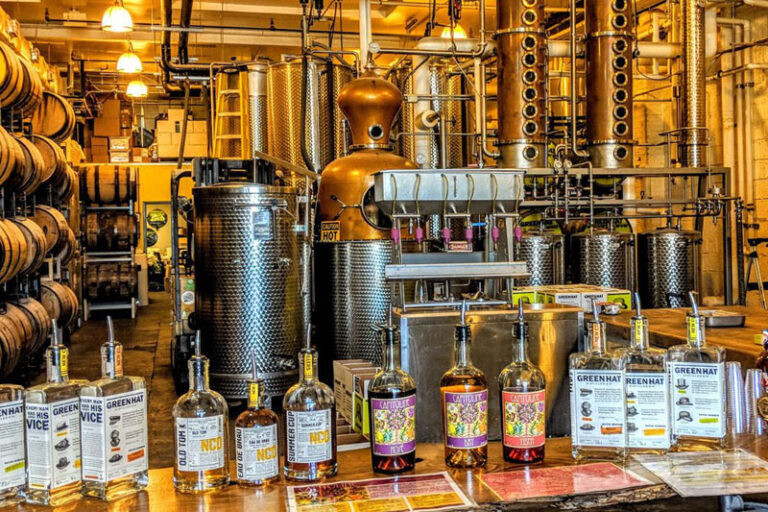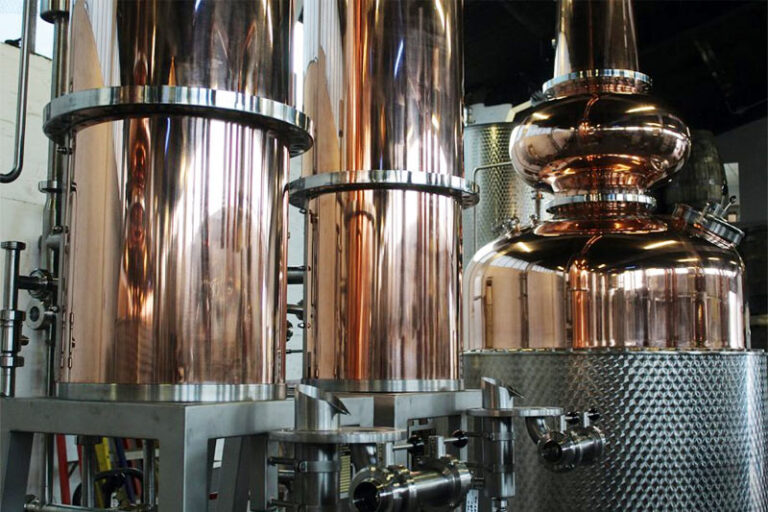Table of Contents
What is whiskey?
What are the basic ingredients of whiskey?
- Grain mash: Most alcohol production starts with agricultural products, which then go through a fermentation process. The fermentable whiskey base is usually a mixture of grains, such as malt, barley, rye, corn, or wheat, and these grains often determine the flavor and name of the final product. For example, the mash for rye whiskey should contain at least 51% rye, while Kentucky bourbon must contain at least 51% corn.
- Water: After the distillation process, whiskey manufacturers add water to the product to achieve the desired alcohol content.
- Optional additives: According to US regulations, whiskey can have up to 2.5% flavoring added (unflavored whiskey is classified as “straight whiskey”). Many whiskey brands choose to add botanicals, spices, flavorings, or colors during the distillation or aging process to give their spirits a unique character or appearance.

The whisky-making process
Malt
Mashing
Fermentation
The wort is cooled to 20°C and pumped into fermentation tanks, where yeast is added and fermentation begins. The live yeast feeds on the sugars, producing alcohol and small amounts of other compounds (called congeners) that contribute to the flavor of the whiskey. Carbon dioxide is also produced, and violent foaming occurs in the fermentation tank. A rotating switch cuts off the foam to prevent overflow. After about 2 days, fermentation gradually stops and the alcohol content in the fermentation tank is 6-8%.
Distillation
The process of brewing beer and brewing whiskey is the same. The brewing steps are the same, except for the different types of grains and yeast used. The distillation process is what makes whiskey different from other spirits. If you brew beer, you don’t need to distill, but brew. Vodka and gin both need distillation, but of course, their raw materials are completely different.
During the distillation process, the leaves are put into the still and heated. The liquid-vapor rises to the top of the still and condenses. The condensate is collected and transferred to another still to be distilled again. Whiskey is distilled 3 times, which helps to remove all flaws.
The alcohol produced at the beginning of the distillation is called the front wine, and the alcohol produced at the end of the distillation is called the back wine. Neither the front wine nor the back wine can be drunk. They are either too strong or too light. The brewer of whiskey is the alcohol collected between the front wine and the back wine, which is the core of the whiskey.
Stills are usually made of copper and help remove unwanted flavor and aroma compounds from the liquor. Common stills are mainly: pot stills and column stills.
- Pot stills: Pot stills are used to produce whiskey. Pot still distillation is a batch process. Some types use double distillation, while others use triple distillation.
- Column stills: Column stills, also known as continuous stills, are commonly used to produce bourbon, rye, and other American whiskeys. Column stills can work continuously and efficiently without the batch processing of pot stills.
Maturation
When aged in oak barrels, whiskey takes on some of the characteristics of oak, such as a rich aroma. The location of the barrels also affects the whiskey, because the air quality, temperature, and humidity vary depending on the warehouse and facility where the whiskey is aged.
Whiskey needs to be aged for at least three years to become whiskey, but the aging process usually lasts longer. Some companies even age their whiskey for up to 20 years.

How Whiskey is Made
Most whiskey makers follow a few basic steps to produce whiskey:
- Mix the base ingredients. To make a fermentable base, whiskey distillers will mix grains (such as malted barley, cornflakes, or rye) with water and yeast. The mixture (sometimes called a “whiskey mash”) is then heated and stirred to ensure it is well mixed and ready to ferment.
- Ferment the base. Whiskey makers then store the base mixture for a specified period (one to two weeks) to fully ferment the mixture. During this step, the compounds begin to break down and produce a simple natural alcohol called ethanol or ethyl alcohol.
- Filter the mixture. Once fermentation is complete, whiskey distillers filter the liquid from the fermented solids. They discard the solids and use the liquid (ethanol) to make vodka.
- Distill. Distillation is a process that purifies a liquid by heating and evaporating it, then collecting the vapor as it condenses back into liquid. The resulting liquid is considered purer (because it leaves behind many impurities as it evaporates) and has a higher alcohol content.
- Collect and sort the distillate. The liquid you get after a whisky distillery is not the same—as the ethanol is distilled, the resulting liquid changes. The first 35% of the distillation produces an ethanol product that contains methanol or acetone, which can be highly volatile or toxic—containers of this liquid are called “forestillate” and “heads,” and distilleries typically throw them away. The next 30% contains the “heart,” which is the best product. The final 35% is the “tails,” which are impure but can be kept and redistilled for further development.
- Aging. After distillation, whisky goes through an aging process, where whisky distillers store the spirit in wooden barrels for at least two years. Distilleries use different aging methods, including new oak barrels, white oak barrels, charred barrels, or barrels soaked in wine or sherry.
- Dilution. To ensure the proper alcohol content, whisky makers test and dilute their product with filtered water before or after aging (sometimes both).
- Bottling. The final step is the bottling process, where the whiskey maker puts the final product into labeled bottles. Once the whiskey is bottled, it stops aging.
Conclusion
Making whiskey is a complex craft. From malting to final bottling, every step determines the flavor and quality of the whiskey. Through fermentation, distillation, aging, and blending, the brewer carefully creates a whiskey with a rich, complex, and diverse taste.

